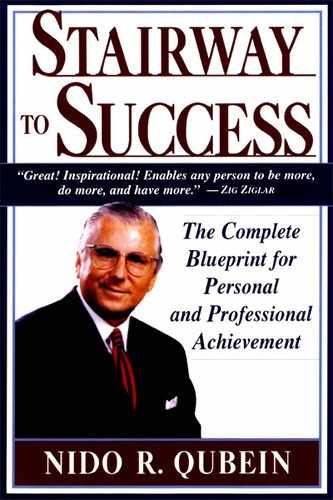PRELUDE TO STEP THREE
GETTING FROM HERE TO THERE
You can never plan the future by the past.
—EDMUND BURKE
You’ve created your future by forming a vision and expressing it through a mission statement. Your dream now glitters on the horizon of the future. But you are standing in the reality of the here and now. How do you close the gap between where you are now and where you want to be?
You can’t dream your way into the future. You have to have a plan. You have to know where you want to go and decide how you’re going to get there. The important word here is how. The word if won’t take you there. To achieve your vision, you must approach it with a positive attitude—a sense of certainty that your dream is achievable. You must adopt the attitude of Hannibal, the great general from ancient Carthage, who asserted, “We will either find a way or make one.”
A plan will establish a route to your destination. It will also provide for the elimination of roadblocks and the blazing of new trails across uncharted territory. It will prevent you from drifting aimlessly through life. A good plan will have these characteristics:
- It will specify actions. A good plan is proactive. It specifies what actions you will take to bring your vision to reality. It puts you in control of events instead of forcing you to respond to events.
- It will set a timetable. Without a specific timetable, your plan loses cohesion and never gains momentum. Nothing gets accomplished “sooner or later.” It gets accomplished at a specific time and specific place.
- It will be flexible. You can’t anticipate every event and circumstance that might have an impact on your future, but you can allow for contingencies.
You formed your vision in the creative right side of your brain. To create a workable plan, you need to bring the left side of the brain into the picture. You’ll still need the right brain to conceive of creative ideas, but you’ll use your left brain to pass ultimate judgment on these ideas, to set priorities, and to devise workable action plans.
You begin the planning process by revisiting your vision and reviewing your mission statement. Assess your present circumstances and measure the gap between where you are and where you want to be. Then follow these steps:
- Set goals.
- Set priorities.
- Develop strategies.
As you develop your plan, keep this point in mind: Your present circumstances do not control your options. They establish a starting point, but they don’t determine your destination. Where you are very quickly becomes where you’ve been. So keep your eyes focused on the future—where you want to go—instead of on the past—where you’ve been.
Have a good trip.
